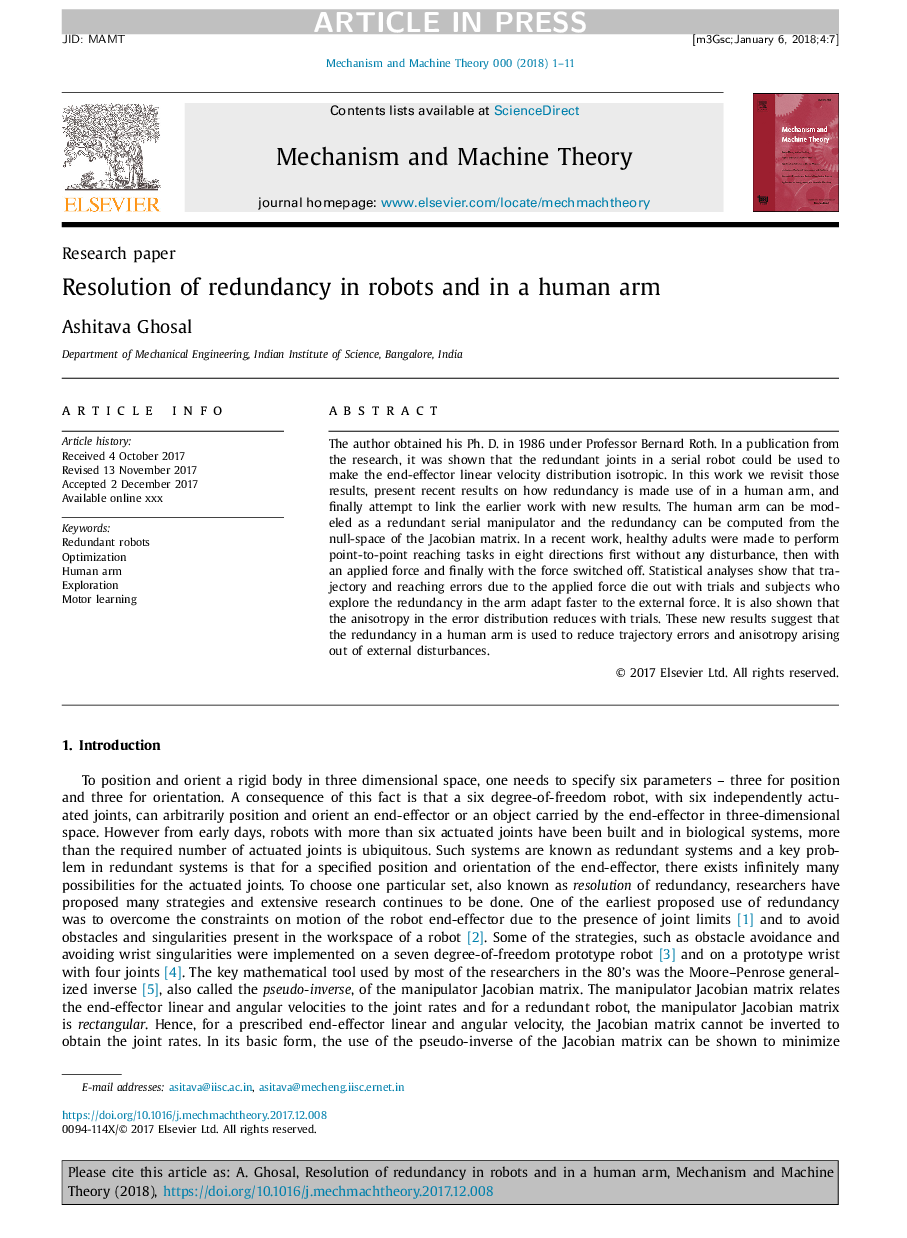| Article ID | Journal | Published Year | Pages | File Type |
|---|---|---|---|---|
| 7179143 | Mechanism and Machine Theory | 2018 | 11 Pages |
Abstract
The author obtained his Ph. D. in 1986 under Professor Bernard Roth. In a publication from the research, it was shown that the redundant joints in a serial robot could be used to make the end-effector linear velocity distribution isotropic. In this work we revisit those results, present recent results on how redundancy is made use of in a human arm, and finally attempt to link the earlier work with new results. The human arm can be modeled as a redundant serial manipulator and the redundancy can be computed from the null-space of the Jacobian matrix. In a recent work, healthy adults were made to perform point-to-point reaching tasks in eight directions first without any disturbance, then with an applied force and finally with the force switched off. Statistical analyses show that trajectory and reaching errors due to the applied force die out with trials and subjects who explore the redundancy in the arm adapt faster to the external force. It is also shown that the anisotropy in the error distribution reduces with trials. These new results suggest that the redundancy in a human arm is used to reduce trajectory errors and anisotropy arising out of external disturbances.
Related Topics
Physical Sciences and Engineering
Engineering
Industrial and Manufacturing Engineering
Authors
Ashitava Ghosal,
